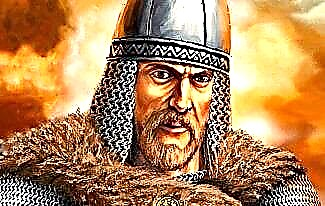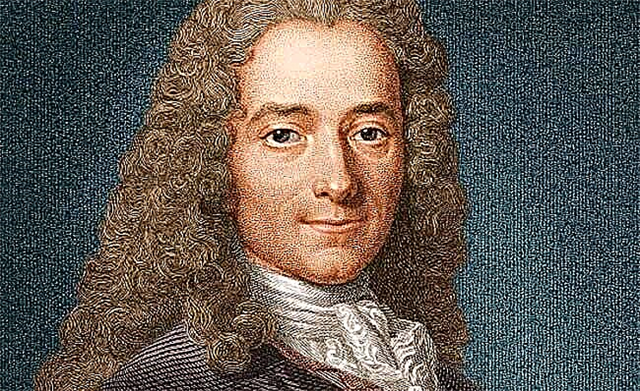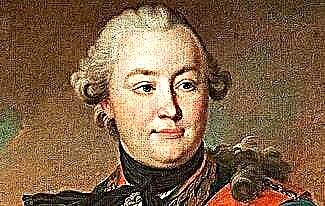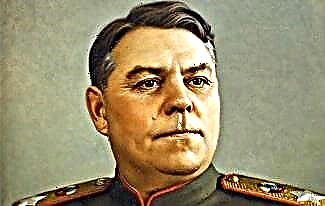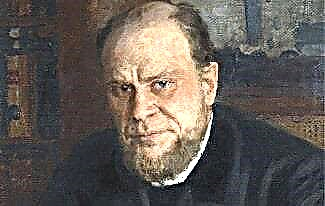According to sociological research, the teaching profession is one of the most controversial. On the one hand, all over the world it confidently occupies one of the first places among the most respected professions. On the other hand, when it comes to whether the respondents want their child to become a teacher, the “respectability” rating drops sharply.

Without any polls, it is clear that for any society, a teacher is a key profession, and you cannot trust anyone in the upbringing and teaching of children. But over time it turned out that the more teachers are needed, the greater the baggage of their knowledge should be. The mass education inevitably reduces both the average level of students and the average level of teachers. A good governor at the beginning of the 19th century could give one son of a noble family all the necessary basic knowledge. But when in a society of such offspring, millions of good governors are not enough for everyone. I had to develop educational systems: first, future teachers are taught, and then they teach children. The system, whatever one may say, turns out to be large and cumbersome. And in the history of every large system there is a place for feats, curiosities, and tragedies.
1. Educators are surprisingly widely represented (in comparison with their salaries) on banknotes of various countries. In Greece, a banknote of 10,000 drachmas was issued with a portrait of Aristotle, the tutor of Alexander the Great. The founder of the famous Academy of Plato was honored by Italy (100 lire). In Armenia, the 1,000-dram banknote depicts the founder of Armenian pedagogy Mesrop Mashtots. At home, the Dutch educator and humanist Erasmus of Rotterdam was given a 100 guilder note. On the Czech 200 kronor banknote, there is a portrait of the outstanding teacher Jan Amos Komensky. The Swiss honored the memory of their compatriot Johann Pestalozzi by placing his portrait on a 20-franc note. The Serbian 10 dinar banknote has a portrait of the Serbo-Croatian language reformer and compiler of its grammar and dictionary, Karadzic Vuk Stefanovic. Peter Beron, the author of the first Bulgarian primer, is depicted on a 10 leva banknote. Estonia went its own way: the portrait of the teacher of German language and literature Karl Robert Jakobson is placed on the 500 kroon banknote. Maria Montessori, the creator of the pedagogical system in her name, decorates the Italian 1,000 lire bill. The portrait of the first president of the Nigerian Teachers Union, Alvan Ikoku, is featured on the 10 naira banknote.

2. The only teacher who entered the history of pedagogy thanks to the only student is Ann Sullivan. In early childhood, this American woman lost her mother and brother (her father left the family even earlier) and practically went blind. Of the numerous eye surgeries, only one helped, but Ann's eyesight never returned. However, at a school for the blind, she took on the teaching of seven-year-old Helen Keller, who lost her sight and hearing at the age of 19 months. Sullivan managed to find an approach to Helen. The girl graduated from high school and college, although in those years (Keller was born in 1880) there was no question of any special pedagogy, and she studied with healthy schoolchildren and students. Sullivan and Keller spent the entire time together until Sullivan's death in 1936. Helen Keller became a writer and world-famous social activist. Her birthday on June 27 is celebrated in the United States as Helen Keller Day.

Anne Sullivan and Helen Keller are writing a book
3. Academician Yakov Zel'dovich was not only a multilaterally gifted scientist, but also the author of three excellent mathematics textbooks for physicists. Zeldovich's textbooks were distinguished not only by the harmony of the presentation of the material, but also by the language of presentation that was quite vivid for that time (1960 - 1970). Suddenly, in one of the narrowly professional journals, a letter appeared, written by academicians Leonid Sedov, Lev Pontryagin and Anatoly Dorodnitsyn, in which Zeldovich's textbooks were criticized precisely for the manner of presentation that was unworthy of "serious science." Zeldovich was a rather controversial person, he always had enough envious people. On the whole, Soviet scientists, to put it mildly, were not a monolithic group of like-minded people. But here the reason for the attacks was so obviously scanty that the name “Three heroes against three times a hero” was immediately assigned to the conflict. Three times the Hero of Socialist Labor was, as you might guess, the author of textbooks Ya. Zeldovich.

Yakov Zeldovich at a lecture
4. As you know, Lev Landau, together with Evgeny Lifshits, created a classical course in theoretical physics. At the same time, his techniques in applied pedagogy can hardly be considered examples worthy of imitation. At Kharkiv State University, he received the nickname "Levko Durkovich" for often calling students "fools" and "idiots." Apparently, in this way the son of an engineer and a doctor tried to instill in students, many of whom graduated from the workers' school, that is, had poor preparation, the foundations of culture. During the examination, one of Landau's students thought that her decision was wrong. He began to laugh hysterically, lay down on the table and kicked his legs. The persistent girl repeated the solution on the blackboard, and only after that the teacher admitted she was right.

Lev Landau
5. Landau became famous for the original way of taking the exam. He asked the group if there were students in its composition who were willing to get a “C” without passing the exam. Those, of course, were found, received their grades, and left. Then exactly the same procedure was repeated not only with those who wanted to get a “four”, but also with those who were thirsty for a “five”. Academician Vladimir Smirnov was no less original in taking exams at Moscow State University. He informed the group in advance that the tickets would be stacked in numerical order, only the order could be either direct or reverse (starting with the last ticket). The students, in fact, had to distribute the queue and learn two tickets.
6. German teacher and mathematician Felix Klein, who made a great contribution to the development of the school education system, has always tried to confirm theoretical calculations by practical school inspections. In one of the schools, Klein asked the students when Copernicus was born. No one in the class could give even a rough answer. Then the teacher asked a leading question: did it happen before our era, or after. Hearing a confident answer: “Of course, before!”, Klein wrote down in the official recommendation that it is necessary at least to ensure that when answering this question, children do not use the word “of course”.

Felix Klein
7. Linguist Academician Viktor Vinogradov, after 10 years in the camps, did not like large crowds of people. At the same time, since pre-war times, there was a rumor that he was an excellent lecturer. When, after the rehabilitation, Vinogradov was hired by the Moscow Pedagogical Institute, the first lectures were sold out. Vinogradov was lost and gave a lecture purely formally: they say, here is the poet Zhukovsky, he lived then, wrote this and that - everything that can be read in a textbook. At that time, attendance was free, and disgruntled students quickly left the audience. Only when there were a couple of dozen listeners left, Vinogradov relaxed and began to lecture in his usual witty manner.

Victor Vinogradov
8. Through the hands of the outstanding Soviet teacher Anton Makarenko, who in 1920-1936 headed correctional institutions for juvenile delinquents, more than 3,000 inmates passed through. None of them returned to the criminal path. Some themselves became famous teachers, and dozens showed themselves excellently during the Great Patriotic War. Among the order-bearers who were brought up by Makarenko, and the father of the famous politician Grigory Yavlinsky. Books by Anton Semyonovich are used by managers in Japan - they apply his principles of creating a healthy cohesive team. UNESCO declared 1988 the year of A. S. Makarenko. At the same time, he was included in the number of teachers who determined the principles of pedagogy of the century. The list also includes Maria Montessori, John Dewey and Georg Kerschensteiner.

Anton Makarenko and his students
9. Outstanding film director Mikhail Romm, taking the entrance exam to VGIK from Vasily Shukshin, was outraged that the applicant from all the thick books had read only "Martin Eden" and at the same time worked as a school director. Shukshin did not remain in debt and, in his expressive manner, told the great film director that the director of a rural school needed to get and deliver firewood, kerosene, teachers, etc. - not to read. Impressed Romm gave Shukshin “five”.
10. One of the examiners at Oxford University was dumbfounded by the demand of a student passing the exam to provide him with smoked veal with beer. A student unearthed a medieval decree according to which, during long exams (they still exist and can last all day), the university must feed the examiners with smoked veal and drink beer. The beer was rejected after finding a more recent ban on alcohol. After much persuasion, smoked veal was replaced with a passed exam and fast food. A few days later, the teacher personally escorted the meticulous student to the University Court. There, a board of several dozen people in wigs and gowns solemnly expelled him from the university. According to the still valid law of 1415, students are required to appear for the exam with a sword.

Stronghold of tradition
11. Maria Montessori categorically did not want to become a teacher. During her youth (the end of the 19th century), an Italian woman could only receive a pedagogical higher education (in Italy, higher education was inaccessible for men - even in the second half of the 20th century, any man with any higher education was respectfully titled “Dottore”). Montessori had to break the tradition - she became the first woman in Italy to receive a medical degree, and then a degree in medicine. It was only at the age of 37 that she opened the first school for teaching sick children.

Maria Montessori. She still had to become a teacher
12. One of the pillars of American and world pedagogy, John Dewey believed that Siberians live up to 120 years. He once said this in an interview when he was already over 90, and he was very sick. The scientist said that if Siberians live up to 120 years, then why not try him too. Dewey passed away at the age of 92.
13. Having created his own pedagogical system based on the principles of humanism, Vasily Sukhomlinsky showed incredible fortitude. Having received a serious wound during the Great Patriotic War, Sukhomlinsky, returning to his native place, learned that his wife and child had been brutally killed - his wife collaborated with the partisan underground. The 24-year-old who has been teaching since the age of 17 did not break down. Until his death, he not only worked as a school director, but also was engaged in pedagogical theory, statistical research, and also wrote books for children.

Vasily Sukhomlinsky
14. In 1850, the outstanding Russian teacher Konstantin Ushinsky resigned from the post of teacher of the Demidov Juridical Lyceum. The young teacher was outraged by the unheard-of demand of the administration: to provide complete programs of his studies with pupils, broken down by hour and day. Ushinsky tried to prove that such restrictions would kill living teaching. The teacher, according to Konstantin Dmitrievich, must reckon with the interests of the students. The resignation of Ushinsky and his colleagues who supported him was satisfied. Now the breakdown of classes by hours and days is called lesson planning and scheduling and is mandatory for every teacher, regardless of what subject he teaches.

Konstantin Ushinsky
15. Once again Ushinsky became a victim of the suffocating atmosphere in the pedagogy of tsarist Russia already in adulthood. From the post of inspector of the Smolny Institute, accused of atheism, immorality, freethinking and disrespect to his superiors, he was sent on ... a five-year business trip to Europe at public expense. Abroad, Konstantin Dmitrievich visited several countries, wrote two brilliant books and talked a lot with Empress Maria Alexandrovna.
16. Doctor and teacher Janusz Korczak since 1911 was the head of the “Home of Orphans” in Warsaw. After Poland was occupied by German troops, the Orphans' House was transferred to the Jewish ghetto - most of the inmates, like Korczak himself, were Jews. In 1942, about 200 children were sent to the Treblinka camp. Korczak had many escape opportunities, but refused to abandon his pupils. On August 6, 1942, an outstanding teacher and his students were destroyed in a gas chamber.
17. Hungarian teacher of ethics and drawing Laszlo Polgar already at a young age, having studied the biographies of a number of talented people, came to the conclusion that you can bring up any child as a genius, you only need proper education and constant work. Having picked up a wife (they met by correspondence), Polgar began to prove his theory. All three daughters, born in the family, were taught to play chess almost from infancy - Polgar chose this game as an opportunity to assess the results of education and training as objectively as possible. As a result, Zsuzsa Polgar became the world champion among women and the grandmaster among men, and her sisters Judit and Sofia also received the titles of grandmasters.

... and just beauties. The Polgar sisters
18. The standard of bad luck can be called the fate of the outstanding Swiss Johann Heinrich Pestalozzi. All his practical undertakings failed for reasons beyond the control of the talented teacher. When he founded The Asylum for the Poor, he was faced with the fact that grateful parents took their children out of school as soon as they got on their feet and received free clothes. According to Pestalozzi's idea, the children's institution was supposed to be self-sustaining, but the constant outflow of personnel did not ensure continuity. In a similar situation for Makarenko, growing children became the support of the team. Pestalozzi did not have such a support, and after 5 years of existence he closed the "Institution". After the bourgeois revolution in Switzerland, Pestalozzi set up an excellent orphanage from a dilapidated monastery in Stans. Here the teacher took into account his mistake and prepared the older children in advance for the role of assistants. The trouble came in the form of Napoleonic troops. They simply drove the orphanage out of a monastery that was well suited for its own accommodation. Finally, when Pestalozzi founded and made the Burgdorf Institute world famous, the institution, after 20 years of successful operation, eliminated squabbles among the administrative staff.
19. Long-term professor at the University of Königsberg, Immanuel Kant, impressed his students not only with punctuality (they checked the clock on his walks) and deep intellect. One of the legends about Kant says that when one day the wards of a never-married philosopher still managed to drag him into a brothel, Kant described his impressions as "a multitude of small, fussy useless movements."

Kant
20. The outstanding psychologist and teacher Lev Vygotsky, perhaps, would not have become either a psychologist or a teacher, if not for the revolutionary events of 1917 and the devastation that followed. Vygotsky studied at the Faculty of Law and History and Philosophy and was already a student published literary critical and historical articles. However, it is difficult to feed on articles in Russia even in calm years, and even more so in revolutionary years.Vygotsky was forced to get a job as a teacher, first in a school and then in a technical school. Teaching captured him so much that for 15 years, despite his poor health (he suffered from tuberculosis), he published more than 200 works on child pedagogy and psychology, some of them became classics.

Lev Vygotsky



